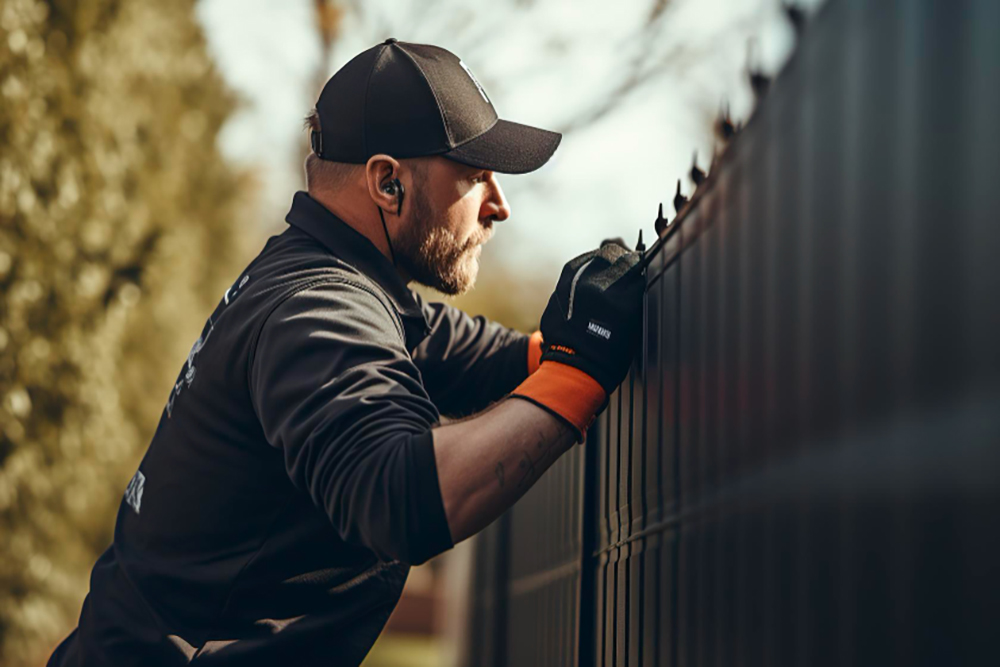Fence Installation Mistakes to Avoid

A picturesque wooden or sleek metal fence can bring charm and security to your property, but the path to a beautiful fence can be riddled with potential construction pitfalls. Whether you're a DIY enthusiast or planning to work with a professional fence company, steering clear of common installation errors is key to ensuring your fence stands the test of time — and the elements.
Installing a fence may seem straightforward, but the intricacies of the process could lead to costly mistakes if not approached with due diligence. In this comprehensive guide, we'll outline the top mistakes to avoid when installing a fence. Our aim is to equip you with the knowledge necessary to transform your vision into a sturdy, long-lasting reality.
Overlooking Local Zoning and Building Codes
Zoning and building codes regulate fence height, material, and even style in some instances. Ignoring these regulations may result in fines, forced removal of your fence, or legal trouble down the line. It’s crucial to research and understand the specific regulations in your area before purchasing materials or beginning installation.
Neglecting Property Lines and Surveys
Incorrect placement can lead to disputes with neighbors, or even encroachment on public land. Always obtain a property survey to verify the location of your property lines and any easements. A professional fencing contractor is well-versed in the significance of ac curate property lines and can be a valuable resource in this regard.
Skipping the Soil and Weather Analysis
The soil type and weather conditions in your area have a significant impact on your fence’s integrity. Failing to account for these environmental factors can lead to premature sagging or even buckling of the fence. A post hole digger may work well in sandy soil, but not clay, and anchor depths need to be adjusted accordingly based on local weather conditions.
Ignoring the Gate Placement
Gates are the functional and often the focal point of a fence. Ensure that their placement allows for easy access, whether it's for pedestrians or vehicles. Ideally, aligning gates with existing walkways or driveways can help maintain flow throughout the property. Also, keep in mind the swing radius and any slope or elevation changes when plotting out their position.
Choosing Incompatible Materials
The material of your fence should be chosen based on your climate, property characteristics, and intended use. Choosing materials based on aesthetics alone can lead to premature weathering and the need for regular maintenance. A quality fence company can help you select the best materials for your specific situation.
Sagging Posts and Inadequate Anchoring
Proper post installation is the backbone of a robust fence structure. Posts should be set in concrete at the correct depth and distance. A common mistake is not allowing the concrete to set properly before attaching the fence sections, leading to sagging and instability. Be patient and give the posts the time they need to properly anchor.
Inadequate Cross Bracing
Fences, especially long ones or those that will bear a load, require cross bracing to maintain their shape and strength. Neglecting to incorporate this can result in a wobbly fence that is more prone to damage and could eventually collapse. Remember, cross bracing should be installed at all corners and every 8 feet along the fence line.
Not Factoring in Drainage
Proper drainage is critical to preserving your fence's foundation. Without it, moisture can accumulate around the posts, leading to wood rot or rust in metal fences. A common mistake is buttressing the fence sections directly against the ground, which hinders drainage. Ensure there is a small gap to allow water to flow away from the posts.
Indecisive Maintenance Plan
Each type of fencing material has unique maintenance requirements. Regular inspection and timely repairs are vital in prolonging the life of your fence. Brushwood fences, for example, require more maintenance than vinyl. Develop a maintenance plan that includes cleaning, painting, and treating, and be sure to follow through with it consistently.
Picking the Wrong Professionals
Finally, if you opt to work with a professional fencing company, ensure they are reputable and experienced. Check for industry certifications and ask for references. The right professionals will stand by their work and offer warranties, giving you peace of mind that your new fence will be installed correctly. Avoid the temptation to go with the cheapest option without considering the provider's track record.
In conclusion, installing a fence is a significant investment of time and resources. By avoiding these common mistakes, you can ensure that your new fence will be a source of pride, privacy, and security for years to come.
For those looking for reliable fence companies in Jacksonville, FL, Masters Quality Fence is a proven leader in the industry, dedicated to providing quality installations and exceptional customer service. If you're in need of a new fence, contact Masters Quality Fence today to book your free consultation and get your project started on the right foot.